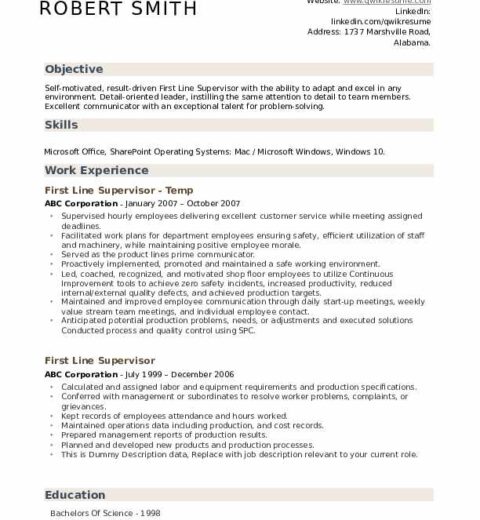In the competitive landscape of job hunting, crafting an effective resume is paramount. Recruiters sift through countless applications, often in a matter of seconds, so your resume must be meticulously structured and content-rich. Here’s an in-depth examination of what to incorporate in your resume to meet the expectations of discerning recruiters.
1. Contact Information
Your resume must begin with clear and updated contact information. This section should include your full name, phone number, email address, and LinkedIn profile (if applicable). Ensure your email address is professional; for instance, using your name rather than a quirky moniker is advisable. Including your city and state can provide geographical context, but specific addresses are often deemed unnecessary.
2. Professional Summary
A compelling professional summary, or objective statement, is instrumental in capturing the attention of recruiters. This 2-3 sentence overview should encapsulate your career trajectory, key competencies, and aspirations. Tailoring this section for each job application can significantly enhance your appeal, showcasing both relevance and enthusiasm.
3. Work Experience
The work experience section is the crux of your resume. It should be meticulously detailed, listing your past roles in reverse chronological order (most recent first). For each position, include the title, company name, location, and dates of employment. Beyond mere descriptions, utilize bullet points to articulate your responsibilities, achievements, and the impact you made in those roles. Employ action verbs to infuse vitality into your descriptions, such as “spearheaded,” “developed,” or “optimized.” Quantifying achievements with metrics and outcomes can catalyze engagement, providing tangible evidence of your capabilities.
4. Skills
The skills section allows you to spotlight both hard and soft skills, presenting a balanced view of your abilities. Hard skills encompass technical proficiencies, languages, and industry-specific expertise, while soft skills may include communication, leadership, or problem-solving prowess. Tailor this section to align with the job description. Use keywords from the job posting, as many companies utilize Applicant Tracking Systems (ATS) that scan resumes for specific terms.
5. Education
Your educational background should also be prominently featured. List your degrees in reverse chronological order, including the institution, degree obtained, and graduation date. If you hold advanced degrees or specialized certifications, consider highlighting them. Additional coursework or projects relevant to the job can also bolster your credentials. Furthermore, recent graduates might include information about GPA or notable honors, while seasoned professionals can omit this for a more streamlined appearance.
6. Certifications and Licenses
In today’s competitive job market, relevant certifications and licenses can distinguish you from other candidates. Highlighting certifications, especially those pertinent to your industry, underscores your commitment to professional development. Include the name of the certification, the issuing organization, and the date obtained. If applicable, ongoing educational endeavors can reflect your engagement with current industry trends and technologies.
7. Professional Affiliations
Belonging to professional organizations or associations can lend credibility to your expertise. Including memberships in this section demonstrates your proactive nature in staying connected with industry changes and networking opportunities. Specify your role within the organization, whether as a member, committee chair, or volunteer, to showcase your involvement and leadership skills.
8. Volunteer Experience
Volunteer work can reveal essential attributes about your character and capabilities that may not emerge from paid experience. This section can showcase your dedication, altruism, and skills gained in diverse environments. Detail your responsibilities and achievements in a concise manner, as this experience may be particularly attractive to employers who value community-oriented individuals.
9. Additional Sections
Depending on your profession or the job you’re targeting, additional sections might be beneficial. For instance, publications, presentations, or research projects can augment your resume for academic positions. Similarly, portfolios can be crucial for creative roles, showcasing your work. Consider adding a section for languages spoken if multilingualism is a valuable asset in your desired field.
10. Design and Formatting
While content reigns supreme, the design and formatting of your resume play a pivotal role in its effectiveness. Utilize a clean, professional layout that employs ample white space. Opt for a legible font and maintain consistency throughout sections in terms of headings and bullet points. A well-structured resume enhances readability, making it easier for recruiters to extract critical information quickly.
11. Proofreading and Feedback
The final, yet essential step in your resume creation process is thorough proofreading. Spelling and grammatical errors can undermine your professionalism and attention to detail. Engage in meticulous reviews, and consider seeking feedback from peers or mentors who can provide objective insights. Utilizing online tools or professional services can further ensure that your resume is polished to perfection.
By incorporating these elements into your resume, you will be well-positioned to meet and even exceed the expectations of recruiters. In a world where first impressions often dictate future opportunities, an expertly crafted resume is your passport to success in the job market. Dedication to the art of resume writing can ultimately pave the way for rewarding career advancements.




